
The Tachinidae are a large and variable family of true flies within the insect order Diptera, with more than 8,200 known species and many more to be discovered. Over 1,300 species have been described in North America alone. Insects in this family commonly are called tachinid flies or simply tachinids. As far as is known, they all are protelean parasitoids, or occasionally parasites, of arthropods, usually other insects. The family is known from many habitats in all zoogeographical regions and is especially diverse in South America.
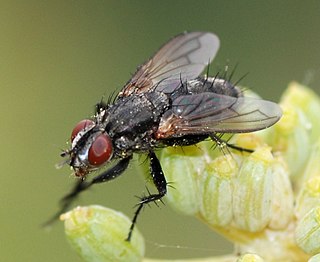
Rhinophorinae is a subfamily of flies (Diptera), commonly known as Woodlouse Flies, found in all zoogeographic regions except Oceania, but mainly in the Palaearctic and Afrotropical regions.
Incamyia is a genus of parasitic flies in the family Tachinidae.
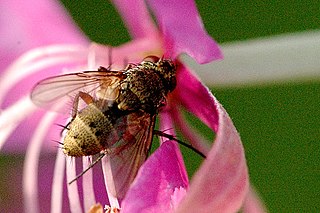
Ceranthia is a subgenus of flies in the family Tachinidae. Some consider this to be a subgenus of Siphona, most European workers seem content that this is a genus in its own right.
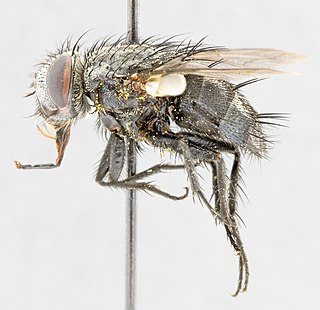
Chaetocraniopsis is a genus of flies in the family Tachinidae.
Daetaleus is a genus of flies in the family Tachinidae.
Morphodexia is a genus of flies in the family Tachinidae.
Piriona is a genus of flies in the family Tachinidae.
Psecacera is a genus of flies in the family Tachinidae.
Pseudochaeta is a genus of flies in the family Tachinidae.
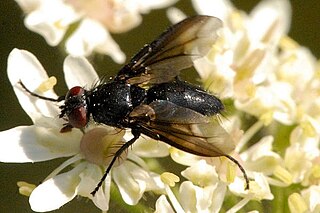
Voriini is a tribe of flies in the family Tachinidae. More junior homonyms exist of Wagneria than any other animal genus name.

Dexiinae is a subfamily of flies in the family Tachinidae.

Dexiini is a tribe of flies in the family Tachinidae.

Exoristinae is a subfamily of flies in the family Tachinidae. Most species are parasitoids of caterpillars.
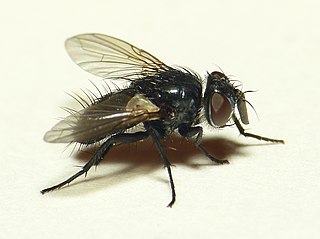
Blondeliini is a tribe of parasitic flies in the family Tachinidae. Larvae are parasitoids of other insects, mostly beetles and caterpillars. Although nearly cosmopolitan, its greatest diversity is in the New World and especially in South America.
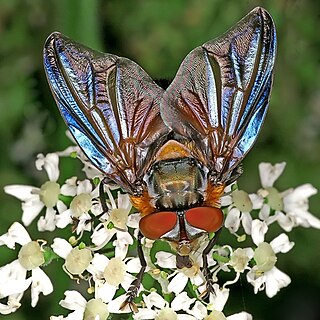
Phasiinae is a subfamily of flies in the family Tachinidae. Except for the small tribe Strongygastrini members of this subfamily attack only Heteroptera.

Tachininae is a subfamily of flies in the family Tachinidae.
Nikolay Ilyich Baranov was a Russian entomologist who specialised in Diptera. His collection of Palearctic Tachinidae is held by the Smithsonian Institution Washington D.C. Baranov described many new species. He worked as an entomologist at the Institute of Hygiene in Zagreb.
Medinophyto is a genus of bristle flies in the family Tachinidae.
Edwynia is a genus of flies in the family Tachinidae.









